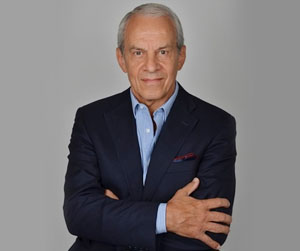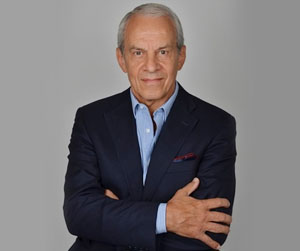Breast reduction
This operation is intended for women who have breasts that are too large (breast hypertrophy).
Having a chest that is too heavy can cause aesthetic discomfort, sometimes causing complex and functional discomfort such as back pain, discomfort when playing sport, trouble losing weight and difficulty in getting dressed.
The excess volume and weight of the breasts change the elasticity of tissues, causing a loss of breast skin tone and the formation of stretch marks. This excess volume is generally associated with sagging breasts (ptosis) and sometimes with a certain degree of asymmetry.
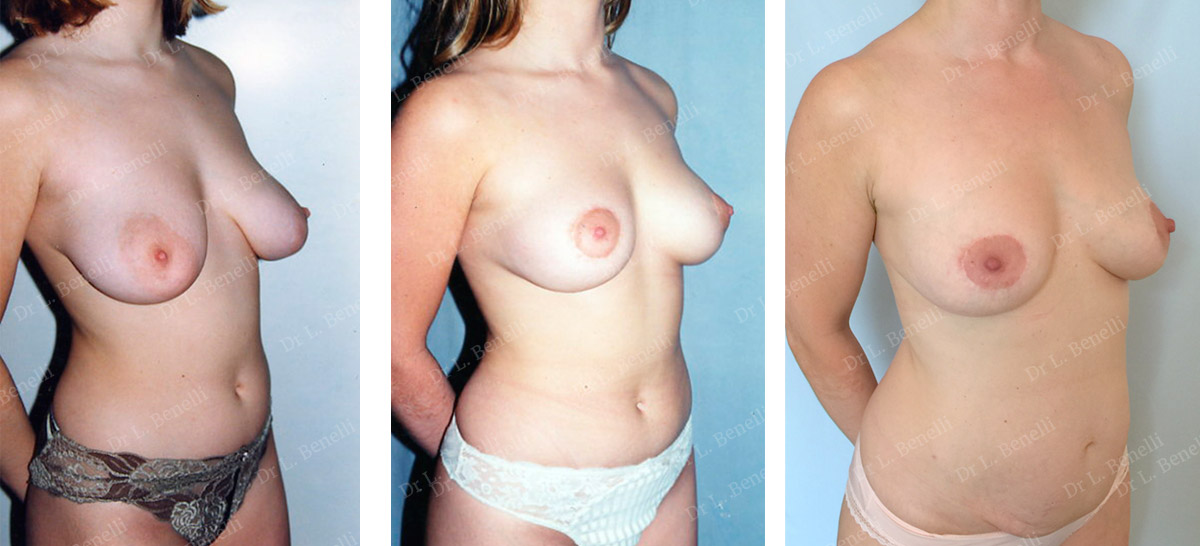
Moderate reduction with the Round Block technique - Result after 1 year - Result after 18 years and 2 pregnancies with 6-months’ breastfeeding in each case.
The aim of the operation is to reduce the volume and correct any sagging or breast asymmetry to obtain a new shape, in harmony with the patient's physique and in accordance with her wishes and personality, while preserving as natural a look and feel that is possible.
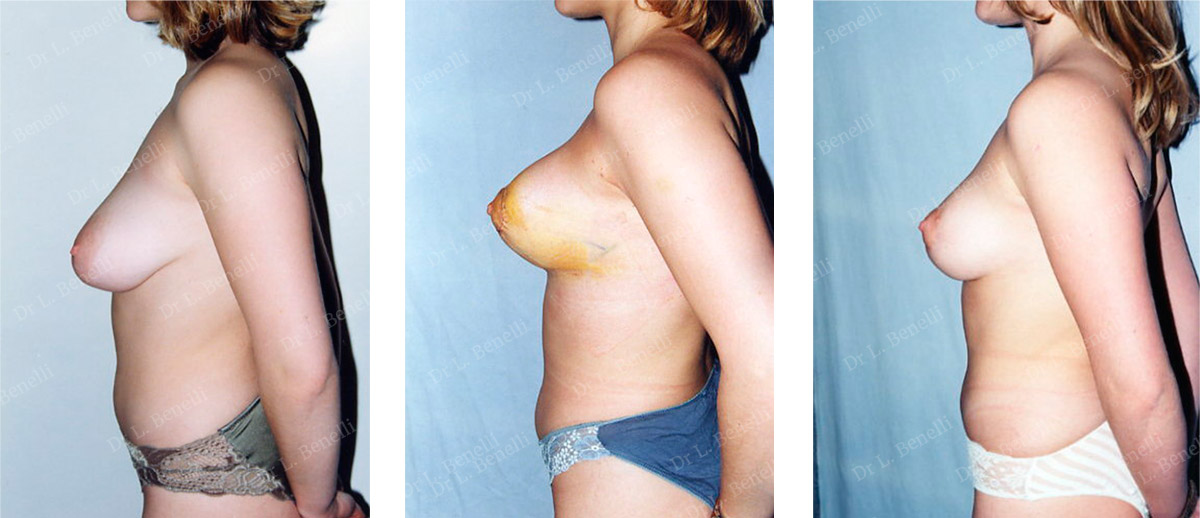
Before - Result at 1 week; hyper-projection of the breast, which will find its natural position after post-operative swelling has reduced - Result after 1 year

View of the areola before - Result after 1 month, showing the small periareolar folds, which will gradually disappear - Result after 1 year: preserving the natural look of the lower part of the breast, where there is no scar.
One problem should not lead to another and the surgical procedure should leave as few marks as possible, in particular as small and discreet a scar as possible.
Conventional cosmetic breast surgery sometimes leaves extensive scars (around the areola, vertically under the areola, and horizontally in the furrow under the breast). So, to reduce potential scarring that often puts women off from having traditional breast surgery, I have developed the “Round Block" technique, which only leaves a simple scar around the areola, an area which usually heals well. This is not very visible because the scar blends with the edge of the areola due to differences in colour and relief between the skin of the areola and that of the breast. This does not result in a vertical scar under the areola or in the sub-mammary fold.
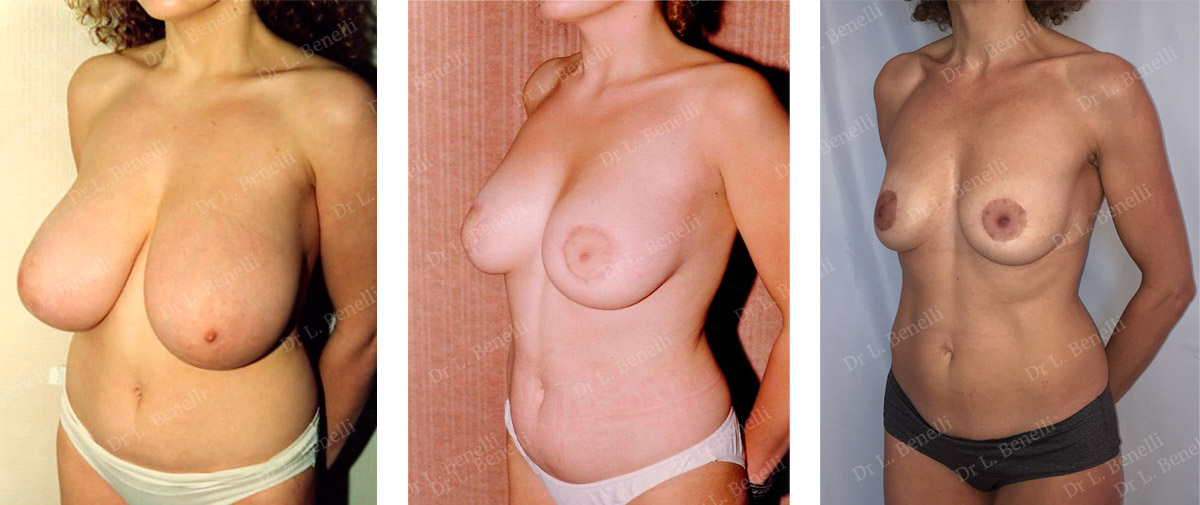
Volume reduction and ptosis treatment using the "Round Block" technique on a young girl - Result after 6 months and 20 years later after 2 pregnancies and 15kg weight loss.
In cases where these is hypertrophy with a very significant breast sagging, a vertical scar under the areola should be added to the periareolar scar. Using the "Round Block" technique with a vertical scar will avoid a horizontal scar in the sub-mammary fold.
It is also possible not to leave any scar on the breast by reducing breast volume through liposuction. This removes the fatty part of the mammary gland and preserves the glandular area. If the breast is essentially fatty, liposuction can be used for a significant volume reduction, leaving only a 5mm scar in the sub-mammary fold.
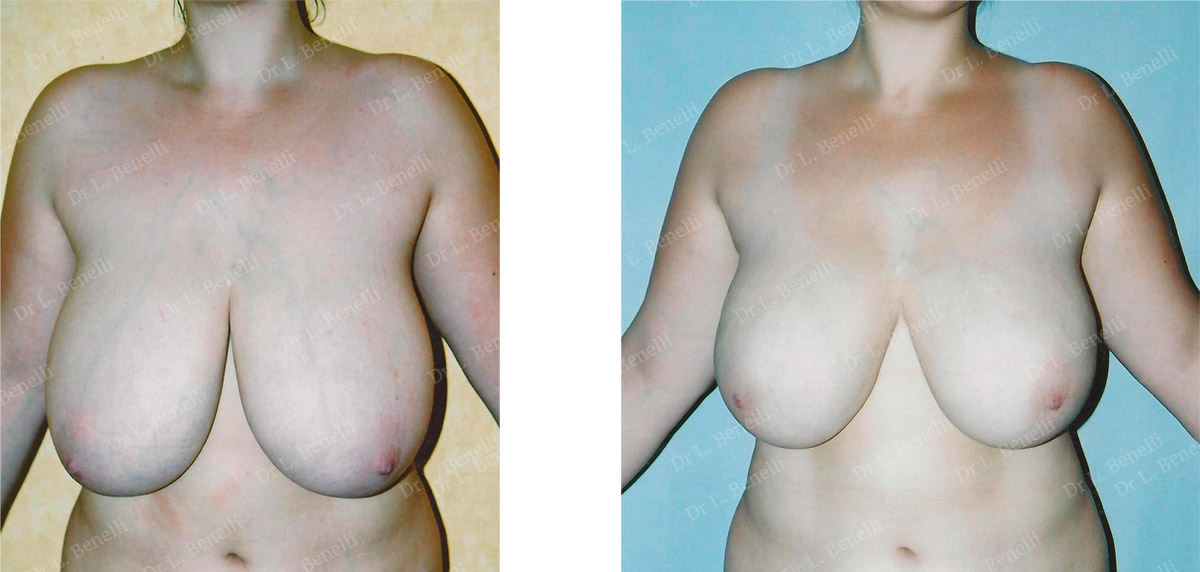
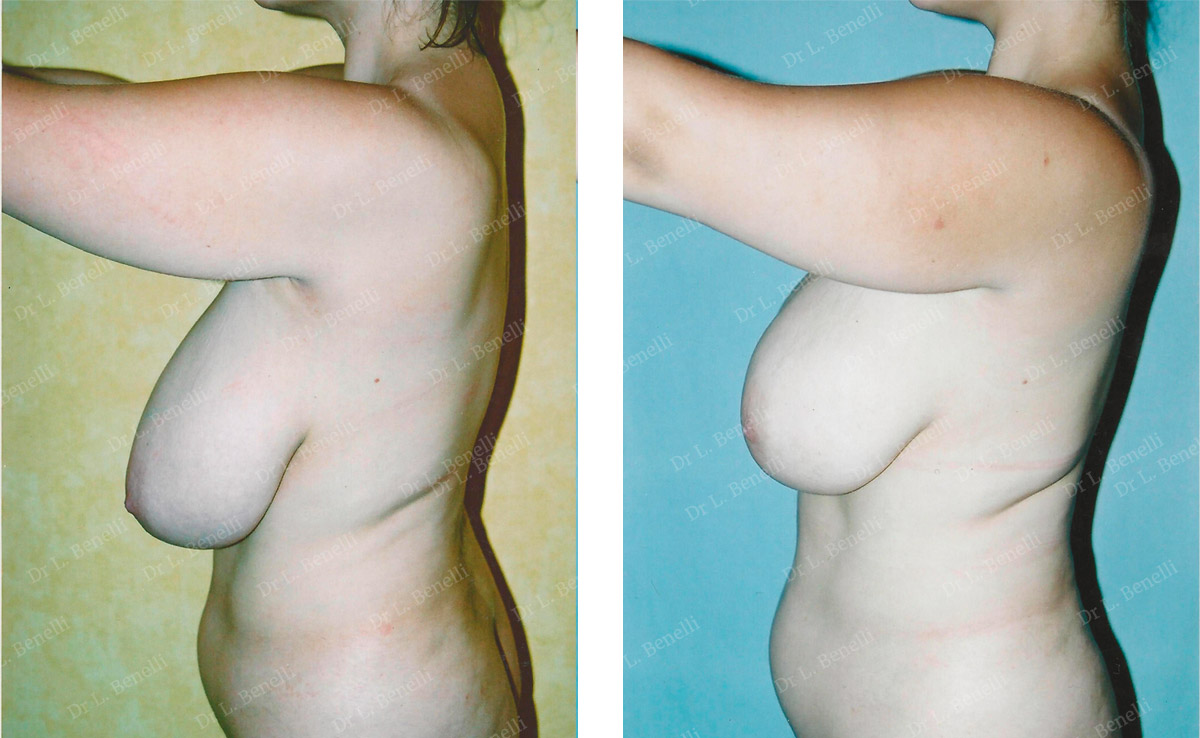
Breast reduction by liposuction without leaving a scar on the breast (except the 5mm cannula insertion hole in the sub-mammary fold)
This new harmony is a factor of well-being and self-confidence, whether your body is naked or clothed.
Uses
This operation is particularly useful when patients experience discomfort on multiple levels, including functional discomfort and back pain, aesthetic discomfort and problems of self-consciousness that interfere with social and personal life, as well as psychological issues and eating disorders.
Breast reduction can be considered when puberty is completely over and the patient is physically an adult. The breasts must have been stable in size for more than 2 years.
Each person comes to me asking for a particular defect to be corrected when they find this particularly troublesome. The objective of the operation will be to correct this defect as a priority by assessing whether it may be appropriate to correct other associated defects for a well-balanced, natural result that meets expectations.
So, depending on the insights gained during the first consultation, the operation could possibly be combined with another intervention such as a breast lift aimed at breast enhancement, correcting inverted nipples, nipple reduction, or improving another part of the figure (stomach, arms, armpits). These can be carried out during the same procedure.
Consultation
During the first consultation, it is essential that you openly express what bothers you and what you would like to improve. Do not be afraid to ask any questions, including expressing your fears and expectations. Everyone has a different body shape, psychology and expectations. These are not the same and there is no standard to apply.
After you have explained your motivations, I will examine you and offer one or more solutions, taking into account your expectations, your anatomy, respecting your identity and the harmony of your physique.
During the first consultation, I will evaluate the technique I will use and the level of volume reduction to achieve.
The "Round Block" technique, which leaves only a simple scar around the areola, will be preferred in cases where this is physically possible.
In order for you to visualise the desired result, I will show you photos of surgical results from cases similar to yours so you can understand the objective of the procedure.
It is essential that you and I have a good understanding when deciding to operate and to determine the technique to use from those I can offer.
I will then give you all the information on the techniques proposed along with the information sheets from the Société Française de Chirurgie Plastique Reconstructrice et Esthétique (French Society of Plastic, Reconstructive and Cosmetic Surgery) as well as a detailed estimate of the costs for the options chosen. You will then be able to move your project forward and get ready for a second consultation when you will be able to ask any additional questions to help you make a decision and prepare for the operation.
Before the procedure
Pre-operative examinations are required as follows:
- Breast ultrasound and/or mammography to check breast health. These will allow any anomalies to be diagnosed and be treated during the operation or may lead to other pre-operative examinations.
- A blood test, if necessary, depending on the type of anaesthetic (local or general).
If you have a general anaesthetic, you will need a consultation with the anaesthetist in the weeks preceding the operation and at least 48 hours beforehand.
You will be prescribed a bra specifically designed for post-operative support and will have to buy this and bring it on the day of the operation so it can be worn at the end the operation.
Recommandations:
No medications containing aspirin or anti-inflammatories can be taken within 10 days of the procedure.
For general anaesthetic, you will have to fast strictly for 6 hours before the operation (do not eat anything, chew gum, eat sweets or smoke).
Tobacco consumption should be stopped or reduced as much as possible during the month before and month after the procedure. Tobacco can cause scarring problems.
The procedure
Hospitalisation and the duration of the intervention:
You will usually need to stay in hospital the night after the operation. Same-day discharge is also possible after a few hours of monitoring following the operation. During the night, painkillers and analgesics are given by drip if you are in hospital or can be taken as tablets at home. Going home the next day, you will need to wear a simple specially-adapted support bra.
The operation lasts a minimum of 2 hours.
Type of anaesthetic:
In most cases, the operation is performed under general anaesthetic.
In some, in-depth local anaesthetic (neuroleptanalgesia) can also be used.
Technique:
Before you go to the operating theatre, in your room, I will go over the precise goals with you as we agreed during the consultations. You can then always make recommendations and ask any questions. I will then draw the lines and marks on your skin to guide the operation and the lines of the incisions.
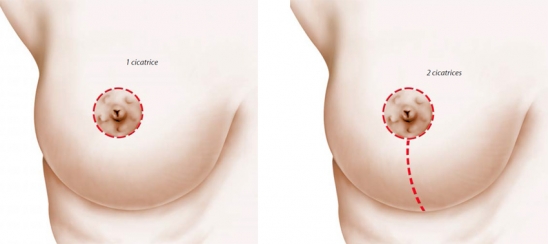
The procedure reduces the volume of the breasts and excess skin. The areola is repositioned and reduced in some cases.
Several techniques can be used which involve different types of scars.
The technique leaving the smallest scar is the “Round Block" technique, which makes it possible to limit the scar to just the circumference of the areola.
In cases of really severe hypertrophy, the "Round Block" technique can only be used if the gland and skin are toned. Otherwise, if the skin and gland are very slack, a vertical scar should be used in addition to the periareolar scar under the areola.
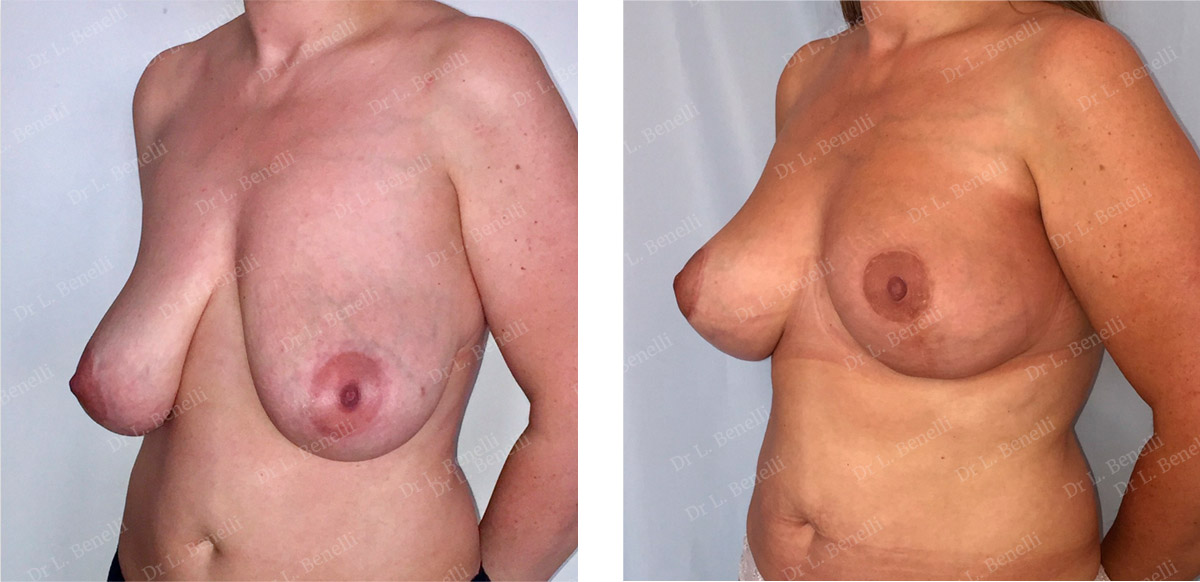
Breast reduction using the vertical scar technique without a horizontal scar in the sub-mammary fold
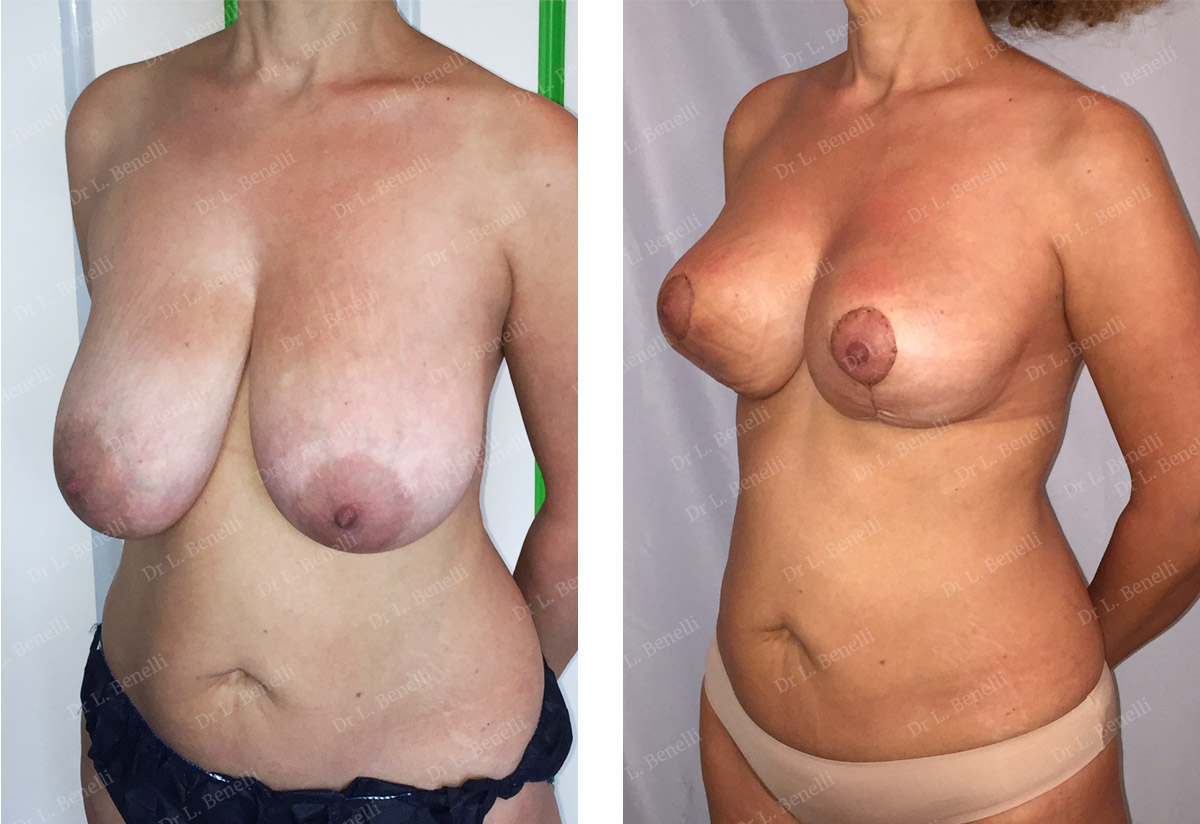
Breast reduction and asymmetry correction using the vertical scar technique without leaving a horizontal scar in the sub-mammary fold
The vertical scar technique repositions a good part of the excess skin around the areola using the "Round Block" technique to avoid a horizontal scar in the sub-mammary fold that conventional inverted T techniques produce. When classic inverted T techniques are used, the excess skin is essentially repositioned downwards and into the sub-mammary fold, while the periareolar "Round Block" technique using a vertical sub-areolar scar means that all excess skin can be repositioned upwards using this periareolar and vertical sub-areolar scar, without having to create a horizontal scar in the sub-mammary fold.
If a patient is experiencing functional discomfort requiring a reduction in breast volume without skin reduction, has breasts that are essentially fatty and does not wish to have their breasts reshaped but simply reduced in weight, simple liposuction can be carried out leaving only a 5mm scar in the sub-mammary fold and no scar on the breast. The result will be a reduction in breast size with a slight lift due to weight reduction, allowing significant functional improvement, but without significantly changing the shape of the breast.
During a breast volume reduction operation, whatever the technique used, if the patient is overweight, it is important that the volume reduction is carried out essentially on the fatty part of the breast without removing too much glandular tissue.
In fact, if there is significant weight loss after the operation, the fatty part of the breast will disappear, which risks leaving a breast with little volume, while the purely glandular part of the breast will maintain its volume and keep a toned curve. This also helps to preserve glandular tissue which is needed for breastfeeding.
Deep internal stitching, which prevents enlargement or deformation of the areola, a major disadvantage of old periareolar techniques, is placed using a deep periareolar binding wire ("Round Block" technique) which provides long-term support to the diameter of the areola and optimises the skin positioning around the areola, leaving only a simple circular periareolar scar.
The stitches on the surface of the skin use threads placed in the skin’s thickness (intradermal stitches) and these are invisible. These stitches are absorbable and, therefore, do not need to be removed.
At the end of the operation, suction drainage is used to limit the formation of hematoma and a bandage is applied to the scar as well as a support bra to wear.
After the operation
During the night and the days following the operation, there may be a painful sensation of tension in the area that was operated on, including aches and pains, which may impede your mobility. These pains are moderate in a resting position and may require analgesics that are given through a drip during hospitalisation or are taken as tablets at home. These post-operative pains will diminish and disappear within a few days of the operation.
This drainage will be removed the day after the operation.
The dressing will be completely removed during the first post-operative consultation about a week after the operation and replaced by a waterproof adhesive dressing, allowing you to shower. This will be changed every 8 days.
A support bra must, however, be worn day and night for one month.
The stitches used are absorbable so they do not need to be removed. Placed internally within the skin’s thickness (intradermal stitch), they are invisible.
Swelling (oedema) and bruising in the chest area are usually very moderate and it takes about ten days for them to disappear almost completely.
You will need to take about a week off work after the operation in most cases.
Care:
In addition to wearing the support bra day and night for 1 month, you should change your waterproof dressing when taking showers every 8 days and keep it on for 1 month.
You will need to attend a follow-up consultation about a week after the procedure, then after 15 days, 1 month, 3 months, 6 months, and 1 year.
Recommandations:
- Do not lift your arms too high and avoid heavy physical exertion.
- You may resume sporting activities about 1 month after the operation by wearing the support bra and limiting yourself to movements that are painless.
- The recommended rest position is lying on your back, slightly raised if possible.
- You can also lie on your side, but not on your front.
- Exposure to the sun: no direct exposure before 1 month and then exposure is allowed using a sun protection cream with a maximum sun protection factor.
- No exposure is allowed while there is bruising or the scar is pink.
- Pregnancy and breastfeeding: Breastfeeding is possible but it is best to wait 6 months before considering pregnancy so that the breasts have settled into their final form.
The result
The new shape of the breasts is immediately visible despite any swelling. Even if the shape is initially a little tight, it will soften in the weeks following the operation.
Where the "Round Block" technique is used, repositioning the excess skin around the areola can initially produce a few wrinkles and their extent will depend on the excess skin removed. They will completely disappear after a few weeks or months.
It will take between 1 and 3 months for the tissues to heal and for the breast to be flexible and natural, with sensitivity restored.
There is an immediate functional improvement in terms of back pain and weight on the shoulders from the first days following the operation.
In the long term, the result will be stable and sustainable.
Changes to the volume, shape and position of the breasts will also be able to evolve if you undergo significant weight changes or over time due to the natural ageing process, which also depends on the quality of tissue support and the volume of the breasts.
In addition to the aesthetic improvement, this procedure has a beneficial effect on personal well-being and weight control and makes physical activity more comfortable.
Risks and complications
Price range
The cost of the operation will depend on the procedure to be carried out, the duration of the operation, the type of anaesthetic and any hospital charges.
The treatment of breast hypertrophy can be covered, at least partially, by a Social Security claim and, if necessary, by your mutual insurance company if this causes you a functional problem due to an excess volume of more than 300g per breast.
A detailed estimate is given to you during the first consultation following the options you have chosen. You then have a minimum legal period of 15 days to consider your options and move your project forward.
The first consultation costs €50. The follow-up consultations before and after the operation are free.
The photographs on this page are to illustrate and complete the information given on the operations. They are merely for information purposes so you can see the goals, results and scars from the operation.
The likelihood of scarring and each patient’s individual anatomy are different. For this reason, therefore, the photographs on this site do not commit Dr. Benelli to providing all patients with a similar result.
The information given on a site is not sufficient in itself and a medical consultation is essential to get the right information for each individual case. For this, you will need to consult a surgeon qualified in Plastic Reconstructive and Aesthetic Surgery.
